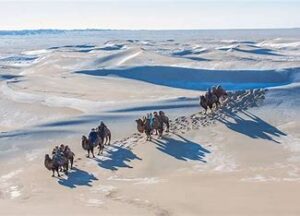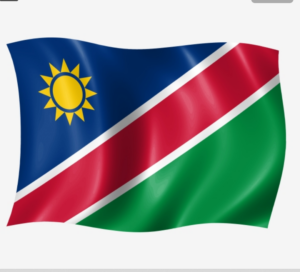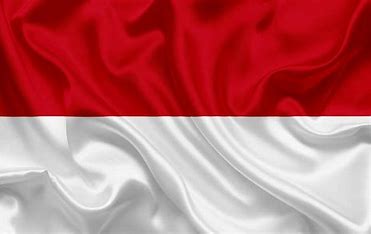
Monaco, the glamorous tiny principality on the French Riviera, is renowned for its luxury, stunning coastal views, historical sites for tourists, and cultural richness.
Here are the top 10 most beautiful and captivating tourist destinations in Monaco:
1. Prince’s Palace of Monaco
2. Monte Carlo Casino
3. Jardin Exotique (Exotic Garden)
4. Larvotto Beach
5. Monaco Cathedral (Saint Nicholas Cathedral)
6. Oceanographic Museum of Monaco
7. Monaco Harbour (Port Hercule)
8. The Japanese Garden
9. The Rock of Monaco (Le Rocher)
10. Eze Village (Nearby)
1. Prince’s Palace of Monaco.
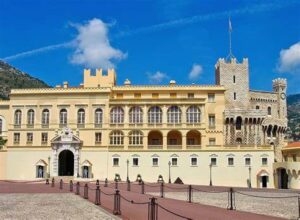
One of the historical sites is the Palace of the Prince of Monaco, built on a prominent rocky hill; It offers tourists views of the sea and the beautiful city.
It shows the power and old story of the royal family and the first state.
In the 1100s, some clever folks from Genoa built a big, strong, and nice-looking fort there.
Then, in 1297, a man named François Grimaldi came and suddenly took control of it. He started living there.
The Grimaldi family has lived there since then. They are one of the oldest affluent families in Europe.
Over time, they made the palace bigger and fixed it many times.
It has old and new styles—some parts are from the Renaissance and Baroque, mixed with new looks.
The palace’s rooms are full of beautiful wall cloths, paintings, and old things.
These show the family’s long-time wealth and power.
2. Monte Carlo Casino in Monaco.
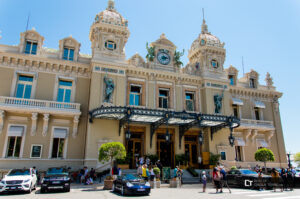
Monte Carlo Casino is one of the historical sites, a famous and special place in Monaco for tourists.
It started in 1863 and made Monaco well-known among the rich and powerful.
A man named Charles Garnier made it. He also built the big opera house in Paris.
The Casino looks very fancy and shows an old style called Belle époquee.
Inside, there are shiny lights, gold decorations, and marble floors.
The Casino brought many visitors and money, helping Monaco grow.
This money helped build nearby places like Hotel Day Paris and Place du Casino.
Many famous people, such as Kings, Queens, and Film Stars, have been there.
Today, the Casino reflects Monaco’s rich style and history. It still brings money to the country.
People go there to see how beautiful it is and to learn about the past.
3. Jardin Exotique (Exotic Garden) in Monaco.
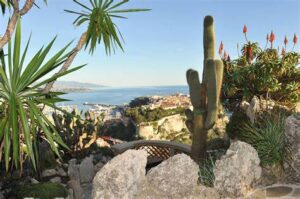
The Jardin Exotique garden in Monaco has many rare and colorful plants.
Most are different kinds of cacti and other lovely plants from faraway places.
Since its opening in 1933, the garden has drawn countless souls mesmerised by its timeless beauty.
Monaco is a warm place, so the plants grow well here.
There is also a cool cave under the garden. A guide can take you inside the cave.
Inside, you will see strange and beautiful rocks and learn how they were made.
This garden is a calm and peaceful place. You can enjoy the plants, relax, and take nice pictures.
4. Larvotto Beach in Monaco.
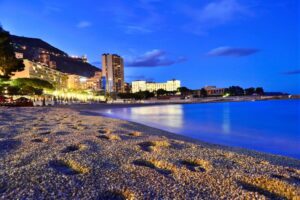
Larvotto Beach, the Song of Monaco, is on the edge of one of the First State’s most prestigious and historically significant seas.
While Monaco is primarily recognised for its Art Deco luxury, Larvotto Beach has deep, old roots that date back to the mid-twentieth century, when the region developed into a glamorous attempt at the sea.
The artificially built seaside began with World War II and the growing diversity of traffic, especially for Monaco, while the first state emerged as a picture of wealth and reputation.
Over time, Larvotto Beach has become a public sector associated with Monaco’s elite lifestyle.
This attracted affluent travellers, celebrities, or even royals, reflecting the glamour of the place.
The development of the beach became part of Monaco’s widespread efforts to strengthen the tourism industry and combine the magnificent life with the natural beauty of the Mediterranean.
5. Monaco Cathedral (Saint Nicholas Cathedral) in Monaco.
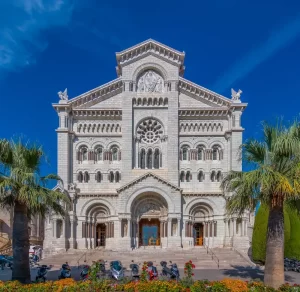
Saint Nicholas Cathedral is a piece of their history and a lovely, monumental church.
Built between 1875 and 1903, the Monaco Cathedral is a beautiful example of the old style of governance. Its preserved stone exterior and tall towers are attractive.
It is one of the most beautiful and oldest historical sites for tourists in Monaco. The building has become the principal place of prayer in Monaco.
The Grimaldi family members, Prince Rainier III and Princess Grace, are buried there. Their graves are in the room under the church.
Because of this, the church is very special and shows the strong history of the Grimaldi family in Monaco.
The church also has many important religious events, like prayers during
Cathedral visitors can appreciate its fashionable interiors, such as fantastic mosaics and a steeply-priced altar, making it a critical stop for anyone who discovers Monaco’s rich cultural and ancient history.
6. Oceanographic Museum of Monaco in Monaco.
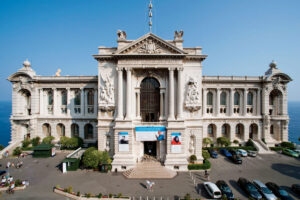
Built in 1910, the Oceanographic Gallery of Monaco is one of the principality’s most basic irrefutable focuses of interest and one of the leading authentic centers of marine development for tourists.
The authentic center, set up by Sovereign Albert I, an enthusiastic pioneer and oceanographer, outlines Monaco’s commitment to marine conservation and clinical research.
The chronicled center, perched on the cliffs of Monaco-Ville, highlights a vast collection of marine life, collectibles, helpful appearances, and breathtaking views of the Mediterranean.
Past its extraordinary divulgences, it also advanced oceanographic research, contributing to its critical noteworthiness.
The “Autonomous of the Seas,” Ruler Albert I, directed some consistent voyages contributing to oceanography.
The chronicled center was set up to reveal his divulgence.
The historical center was made to preserve his discoveries and respect his bequest by offering sea preservation and assisting therapeutic research.
Guests can investigate numerous celebrated places, including aquariums full of assorted marine species and verifiable introductions to oceanic research.
The exhibition hall is also a medium for examining marine natural frameworks.
As an ancient online location, the Oceanographic Authentic Middle talks to Monaco’s well-off maritime legacy and advancing dedication to guarding the oceans for future generations.
7. Monaco Harbour (Port Hercule) in Monaco.
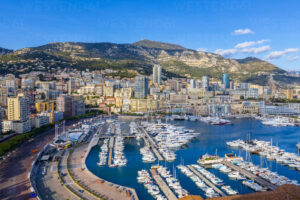
Harbour Hercules is the most prominent harbour of Macao. It is in the La Kondamine area, near the prince’s royal residence.
It is one of the most seasoned ports on the French Riviera and a deep-water harbour.
The harbour was completed in 1926 and expanded in 1970 due to an increase in the number of ships.
It may be a popular scene for world-class events such as the Monaco Yacht Appearance, the Monaco Equipe 1 Astounding Prix, and the Monaco E.P. Fantastic Prix.
Guests to Harbour Hercules can walk along the waterfront strolling track and visit cafes and eateries that offer staggering views of the Mediterranean Ocean.
Monaco’s popular points of interest are within a brief distance of the harbour, including the Prince’s Royal residence, the Oceanographic
The exhibition hall and the Monte Carlo Casino.
All through the year, the harbour talks about Hercules’ actions.
It serves as the middle of the Monaco Yacht Appearance and is transformed into an exciting occasion amid the Formula 1 Grand Prix, with race cars hustling through its streets.
Indeed, on the exterior of occasions, the harbour gives a calm, yet enthusiastic climate where you’ll be able to people-watch, shop for extravagant yachts, or take a vessel trip.
Either the entryway Hercules presents the Monaco twinight and fascination.
8. The Japanese Garden in Monaco.
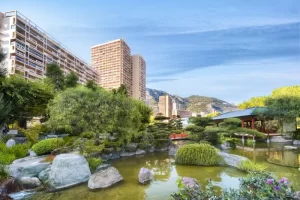
The garden’s name was adjusted to show friendship with Japan. Hence, Monaco cares about its friends and wants to follow their ancient traditions.
Yasuo Beppu, a Japanese man, designed the garden. He mixed the Japanese garden style with Monaco’s weather and nature, making the garden calm and memorable. It also shows that many cultures live together in Monaco.
Even though the garden is new, it is essential because it shows the friendship between Monaco and Japan. The Japanese people gave this garden as a gift. It indicates that Monaco wants to maintain good relations with other cultures.
You can see miniature trees, such as bonsai plants, small ponds called koi stone lights, and a tea house.
All these things together make the garden a beautiful and peaceful place. People come here to rest and think quietly.
The garden is near the sea and close to Monaco’s rich area. This Japanese garden is a quiet place in the middle of the city for people.
Anyone can visit the garden, which shows that Monaco has good relations with the rest of the world.
Many people from different countries visit it.
The Japanese Garden is an essential place in Monaco. It brings different cultures together and shows how much Monaco respects other countries’ traditions.
9. The Rock of Monaco (Le Rocher) in Monaco.
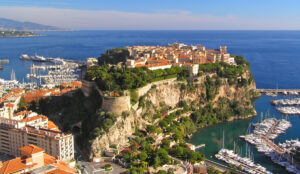
The Rock of Monaco, also known as Le Dhochar, is a famous and old place in Monaco.
It may be a vast, rough slope next to the ocean. You’ll have a lovely view of the water and the city from the beach.
Le Dan is in the old part of Monaco. At the foot of the mountain is Rajkumar’s illustrious home, where the distinguished Grimaldi family has lived for 700 years.
Visitors can pass through small roads in the Old Town (Monaco-Cile).
There are very few shops and eateries. At the top, you can also see the guard changing in front of the palace.
It happens every day before dinner, and many people come to see it.
Other vital places in Le Danes include Monaco Cathedral, where Sovereign Rainier III and Princess Grace are buried.
There’s another oceanographic historical center, known worldwide for its presentations of Ocean Life and the Sea.
10. Eze Village (Nearby) in Monaco.

Only a short distance from Monaco is Eze Village, a picturesque medieval town at a height, which provides fantastic, captivating scenes of the French Riviera.
It was a well-protected town in the 1300s. As a result, it has become one of the most captivating medieval cities in the world, offering guests a charming glimpse into the past.
Slim Kobalstone of Eze reflects roads, historical stone buildings, and old-fashioned classes, reflecting their rich history and undisputed attraction.
Historically, Eze was strategically located for defense, with steep slopes and rocky mountains forming a natural fortress.
The village’s curved streets and desert walls were designed to protect the inhabitants from the invaders.
Eze played an essential role in local exchange and trade through the Middle Ages, which made careful profits for each sea and the surrounding mountains.
Nowadays, Eze is known for its radiant, secure medieval design, including the remains of the 11th-century Post, which gives an excellent approach to the Mediterranean.
This town is also home to Fragonard Parfumerie, which reminds me of the fragrance industry’s long-standing conventions.
As a verifiable place, the Eze town could be a living confirmation of the French Riviera’s social and engineering legacy.
It draws visitors to discover its rich past and reveals the wonders of its fantastic prospects.
Monaco brings any tourist unforgettable happiness, combining luxury, history, and natural splendor.
Monaco attracts tourists who enjoy online casinos, beautiful coastal views, and historical sites.


